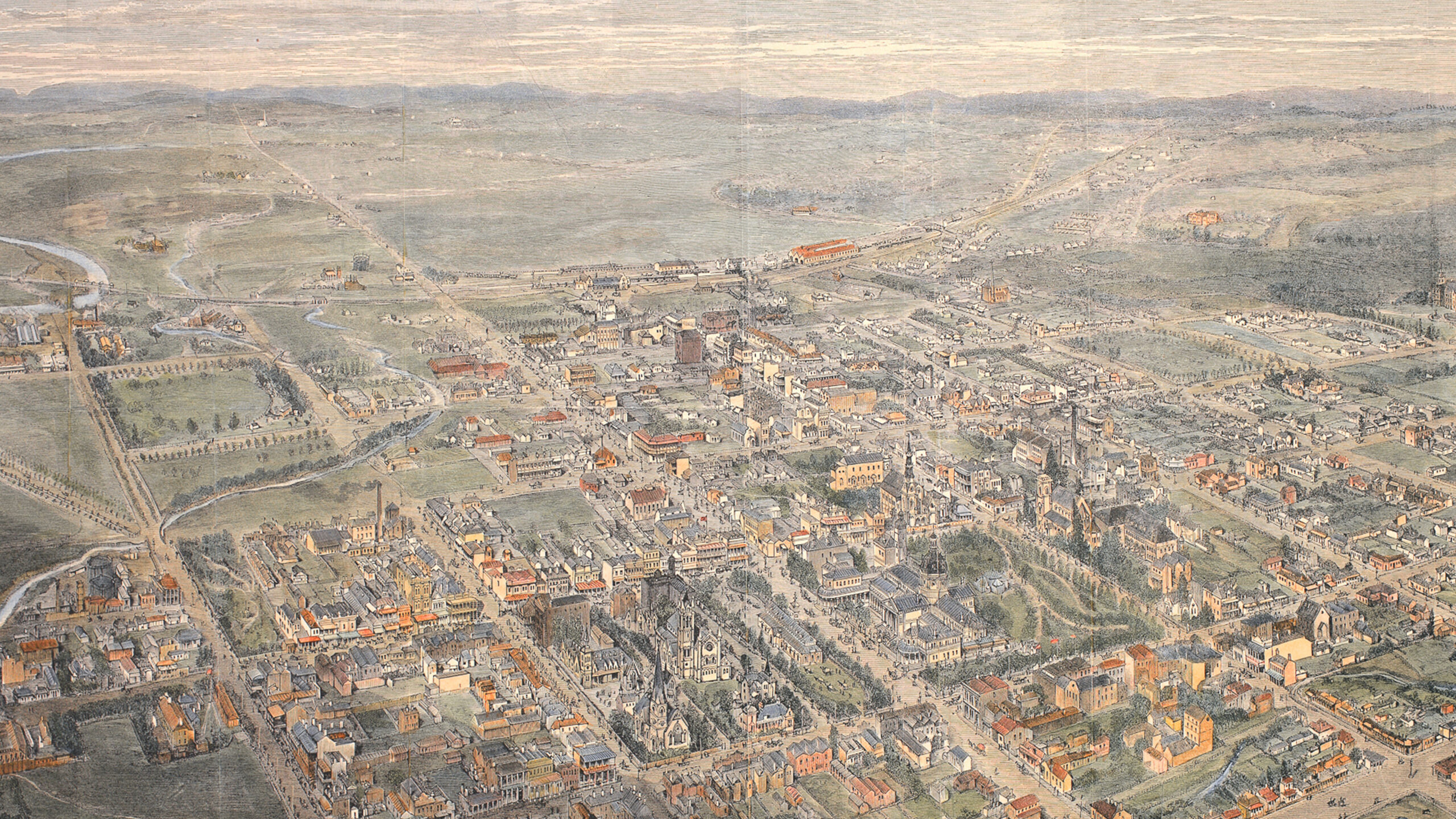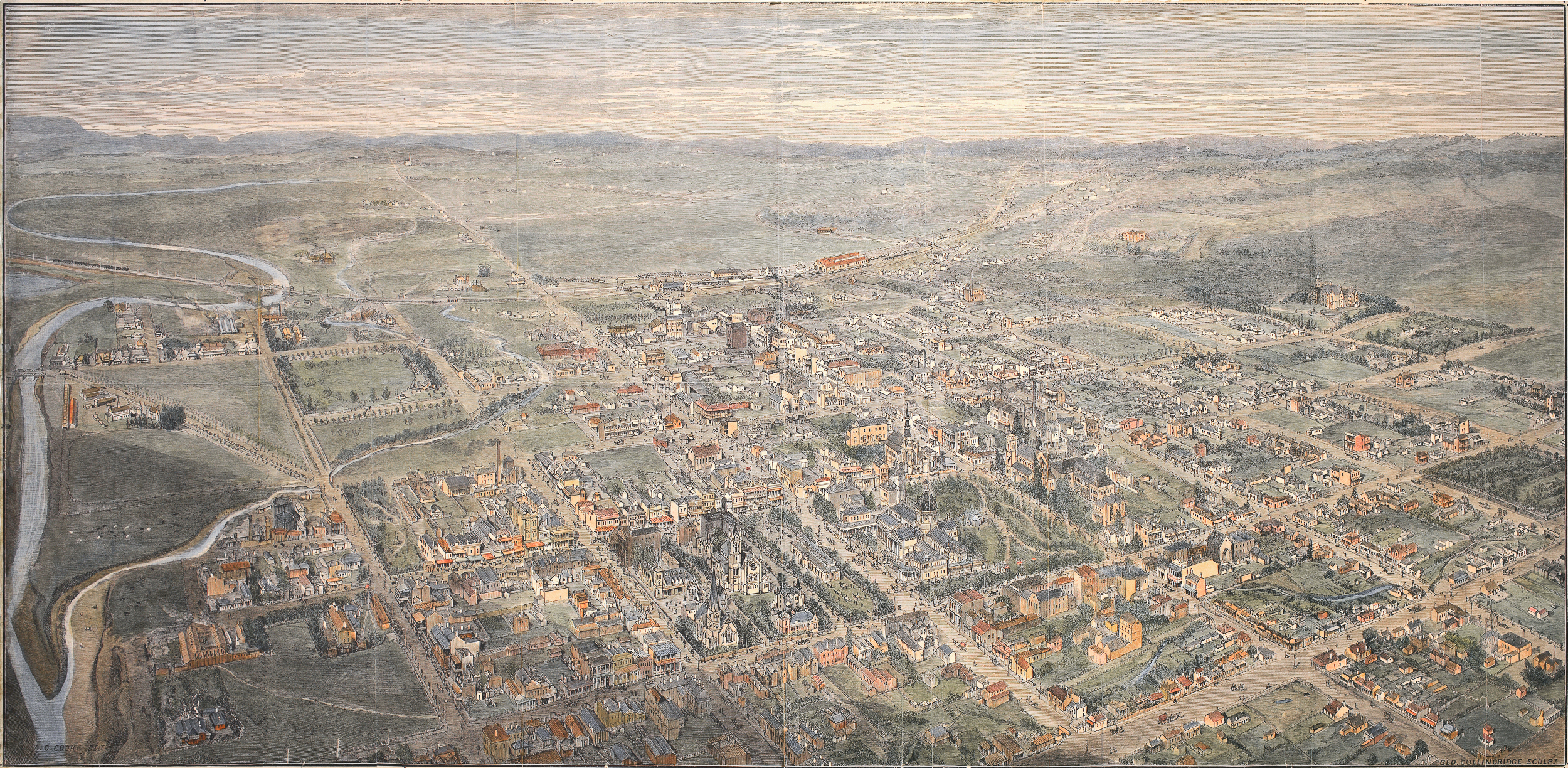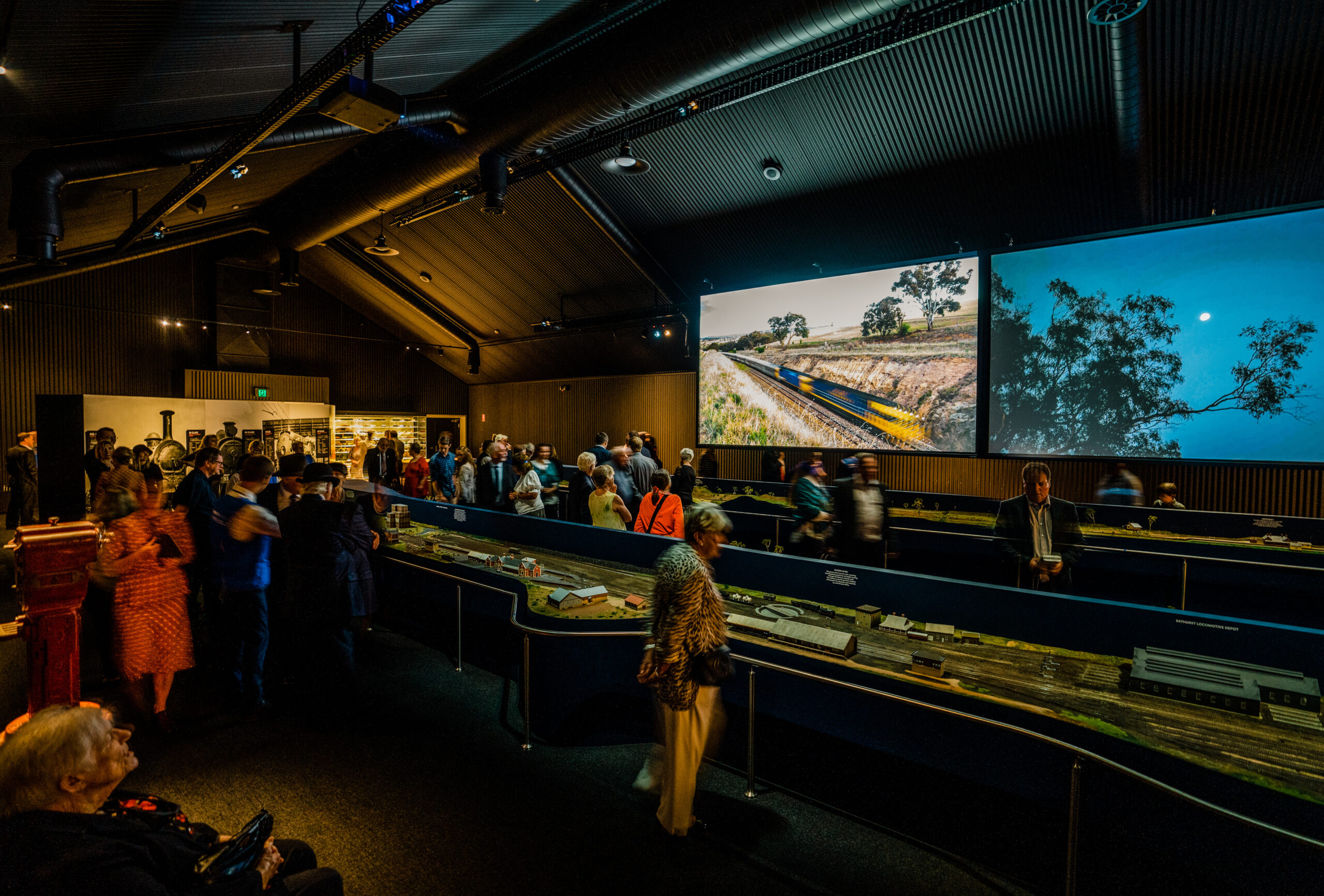Making a Scene
Cooke & Collingridge’s Bird’s Eye View of Bathurst
Drawn by Albert Cooke (1836-1902) and engraved by George Collingridge de Tourcey (1847-1931), this magnificently detailed scene was created in 1891. Deft eyes, steady hands, a kit of assorted tools, and experience, were critical to its making. Albert and George also collaborated on a similar view of Sydney a year earlier, and Cooke made a different aerial perspective of Bathurst in 1880. Into the twentieth century, they both became honoured Australian artists.
Often referred to as a bird’s eye view, the aerial perspective was commonly adopted to illustrate and promote the colony’s growing towns and cities. As towns and cities expanded, these images were celebrated by Europeans as a record of the colony’s ‘civilisation’ and ‘progress’. One landmark shown at the edge of the town, in the centre-background of the print, is the Bathurst Railway Station – it was among many advances that the town toasted in this era.
Albert Cooke was born in England and migrated to Victoria in 1854 – having had some training in varied art practices back home. He went to the Victorian goldfields, but with no luck there he turned to his creativity to earn a living. Albert was a skilled engraver and watercolourist, just like George. He also had architectural drafting skills, but it is unclear whether it was Albert or George who coloured this Bathurst image.
Though born in England, George also had French ancestry. He lived in France from the age of seven to young adulthood. It was in France that George studied art and learnt engraving. He went on to work as an artist in France and England before following his brother Arthur, also an artist, to Australia. Throughout his life, he worked with a number of the popular illustrated newspapers, including the Illustrated Sydney News and the Australian Town and Country Journal.
Despite its aerial perspective, Albert probably made his sketch from the ground by applying a grid method to scale the town’s layout. And using a mirror to see Albert’s sketch in reverse, George would have engraved an inverted view of the town so that when it was pressed onto paper it appeared as it was seen in real life.





